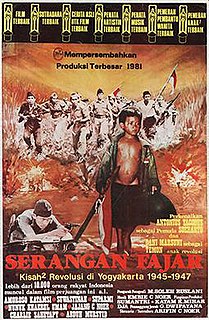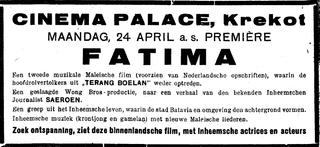Karl Heider (born January 21, 1935) is an American visual anthropologist.
Karl Heider (born January 21, 1935) is an American visual anthropologist.
Heider was born in Northampton, Massachusetts. [1] Heider is the son of psychologists Fritz and Grace (née Moore) Heider. He had two brothers; John and Stephan.
After spending two years at Williams College, Heider transferred to Harvard College where he earned his B.A. in anthropology. Heider then spent a year touring Asia on a Sheldon Traveling Fellowship provided by Harvard. [2] Returning to Harvard in 1958, Heider went on to earn an M.A. in 1959 and Ph.D. in 1966. [3]
He was married to the psychologist Eleanor Rosch with whom he studied the Dani people. [4] [5] The couple divorced in the late 1970s. [6]
Heider's work ranged from psychological anthropology to visual anthropology. [7]
It has included going into the West Papua region in the 1960s and 1990s, [8] as well as producing works on ethnographic film making [9] and writing on Indonesian cinema. [10]

Dead Birds is a 1963 American documentary film by Robert Gardner (1925-2014) about the ritual warfare cycle of the Dugum Dani people who live in the Baliem Valley in present-day Irian Jaya province on the western half of the island of New Guinea that is part of present-day Indonesia. The film presents footage of battles between the Willihiman-Wallalua clan and the Wittaia clan with scenes of the funeral of a small boy killed by a raiding party, the women's work that goes on while battles continue, and the wait for enemy to appear. In 1964 the film received the Grand Prize "Marzocco d'Oro" at the 5th Festival dei Popoli rassegna internazionale del film etnografico e sociologico in Florence, Italy, the Robert J. Flaherty Award given by the City College of New York, and was a featured film at the Melbourne Film Festival. In 1998, Dead Birds was included in the annual selection of 25 motion pictures added to the National Film Registry of the Library of Congress. being deemed "culturally, historically, or aesthetically significant" and recommended for preservation. Dead Birds has come to hold canonical status among ethnographic films.

Bronisław Kasper Malinowski was a Polish-British anthropologist whose writings on ethnography, social theory, and field research have exerted a lasting influence on the discipline of anthropology.

The Dani people, also spelled Ndani, and sometimes conflated with the Lani group to the west, are a people from the central highlands of western New Guinea.

Eleanor Rosch is an American psychologist. She is a professor of psychology at the University of California, Berkeley, specializing in cognitive psychology and primarily known for her work on categorization, in particular her prototype theory, which has profoundly influenced the field of cognitive psychology.

Visual anthropology is a subfield of social anthropology that is concerned, in part, with the study and production of ethnographic photography, film and, since the mid-1990s, new media. More recently it has been used by historians of science and visual culture. Although sometimes wrongly conflated with ethnographic film, visual anthropology encompasses much more, including the anthropological study of all visual representations such as dance and other kinds of performance, museums and archiving, all visual arts, and the production and reception of mass media. Histories and analyses of representations from many cultures are part of visual anthropology: research topics include sandpaintings, tattoos, sculptures and reliefs, cave paintings, scrimshaw, jewelry, hieroglyphics, paintings and photographs. Also within the province of the subfield are studies of human vision, properties of media, the relationship of visual form and function, and applied, collaborative uses of visual representations.

Timothy Asch was an American anthropologist, photographer, and ethnographic filmmaker. Along with John Marshall and Robert Gardner, Asch played an important role in the development of visual anthropology. He is particularly known for his film The Ax Fight and his role with the USC Center for Visual Anthropology.

Ritual warfare is a state of continual or frequent warfare, such as is found in some tribal societies.
Don Kulick is professor of anthropology at Uppsala University in Sweden. Kulick works within the frameworks of both cultural and linguistic anthropology, and has carried out field work in Papua New Guinea, Brazil, Italy and Sweden. Kulick is also known for his extensive fieldwork on the Tayap people and their language in Gapun village of East Sepik Province, Papua New Guinea.
Robert Grosvenor Gardner was an American academic, anthropologist, and documentary filmmaker who was the Director of the Film Study Center at Harvard University from 1956 to 1997. He is known for his work in the field of visual anthropology and films like the National Film Registry inductee Dead Birds and Forest of Bliss. In 2011, a retrospective of his work was held at Film Forum, New York.
Ward Hunt Goodenough II was an American anthropologist, who has made contributions to kinship studies, linguistic anthropology, cross-cultural studies, and cognitive anthropology.

An ethnographic film is a non-fiction film, often similar to a documentary film, historically shot by Western filmmakers and dealing with non-Western people, and sometimes associated with anthropology. Definitions of the term are not definitive. Some academics claim it is more documentary, less anthropology, while others think it rests somewhere between the fields of anthropology and documentary films.

Ethnocinema, from Jean Rouch’s cine-ethnography and ethno-fictions, is an emerging practice of intercultural filmmaking being defined and extended by Melbourne, Australia-based writer and arts educator, Anne Harris, and others. Originally derived from the discipline of anthropology, ethnocinema is one form of ethnographic filmmaking that prioritises mutuality, collaboration and social change. The practice's ethos claims that the role of anthropologists, and other cultural, media and educational researchers, must adapt to changing communities, transnational identities and new notions of representation for the 21st century.
Grand Valley Dani, or simply Dani, is one of the most populous Papuan languages in Indonesian New Guinea. The Dani people live in the Baliem Valley of the Western Highlands.

Pareh, released internationally as Pareh, Song of the Rice, is a 1936 film from the Dutch East Indies. Directed by the Dutchmen Albert Balink and Mannus Franken, it featured an amateur native cast and starred Raden Mochtar and Soekarsih. The story follows the forbidden love between a fisherman and a farmer's daughter.

Albert Balink was a Dutch journalist and filmmaker who contributed to early Indonesian cinema. Born in the Netherlands, he began a career in film journalism in the Dutch East Indies. A self-taught filmmaker, in the mid-1930s, he released a documentary and two feature films, before immigrating to the United States and resuming his journalistic career.

Serangan Fajar is a 1982 Indonesian war film directed by Arifin C. Noer and produced by G. Dwipayana. Telling the lives of several persons during the Indonesian National Revolution, the film used wayang imagery to show heroism. The critically acclaimed film has been read as emphasising then-President Suharto's role in the revolution, especially the General Offensive of 1 March.

Pengantin Pantai Biru is a 1983 film directed by Achmad Salim, produced by Ferry Angriawan, and starring Meriam Bellina and Sandro Tobing. It follows two castaways, children who grow up with one of their fathers but must fend for themselves after they are captured and deified by natives. Adapted from Henry De Vere Stacpoole's novel The Blue Lagoon, via the film of the same name, Pengantin Pantai Biru introduces several differences to the story.

Fatima is a 1938 film from the Dutch East Indies directed by Othniel and Joshua Wong. Written by Saeroen, it starred Roekiah, Rd Mochtar, and ET Effendi and followed two lovers who are disturbed by a rich youth. The film followed the same formula as the earlier hit Terang Boelan, and saw commercial success domestically. It is one of three films which Misbach Yusa Biran credits with reviving the domestic film industry, which had been faltering.

Alphonsus Augustus Sowada was an American Roman Catholic bishop, cultural anthropologist, and first Bishop of Agats in Indonesia. A longtime collector and preserver of Asmat cultural artifacts, he helped found both the Asmat Museum of Culture and Progress in Agats, and the American Museum of Asmat Art in his home state of Minnesota.

The American Museum of Asmat Art is a gallery exhibiting the art and culture of the Asmat people of southwestern Papua, Indonesia, housed at the University of St. Thomas in St. Paul, Minnesota. Featuring more than 2,200 objects, it is one of the largest of its kind in the United States. Asmat art is widely collected in major Western museums despite the difficulty in visiting the remote region to collect work; the "exceptionally expressive" art "caused a sensation in art-collecting circles" which led to large-scale collecting expeditions in the post-WWII era, according to art scholar and ethnology Dirk A.M. Smidt. The gallery includes a permanent display of Asmat works such as ancestor poles (bis) and canoes, and a rotating exhibition highlighting aspects of Asmat art and culture. Much of the collection is accessible through the museum's online database.